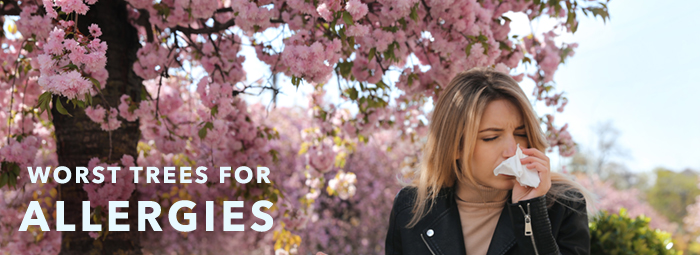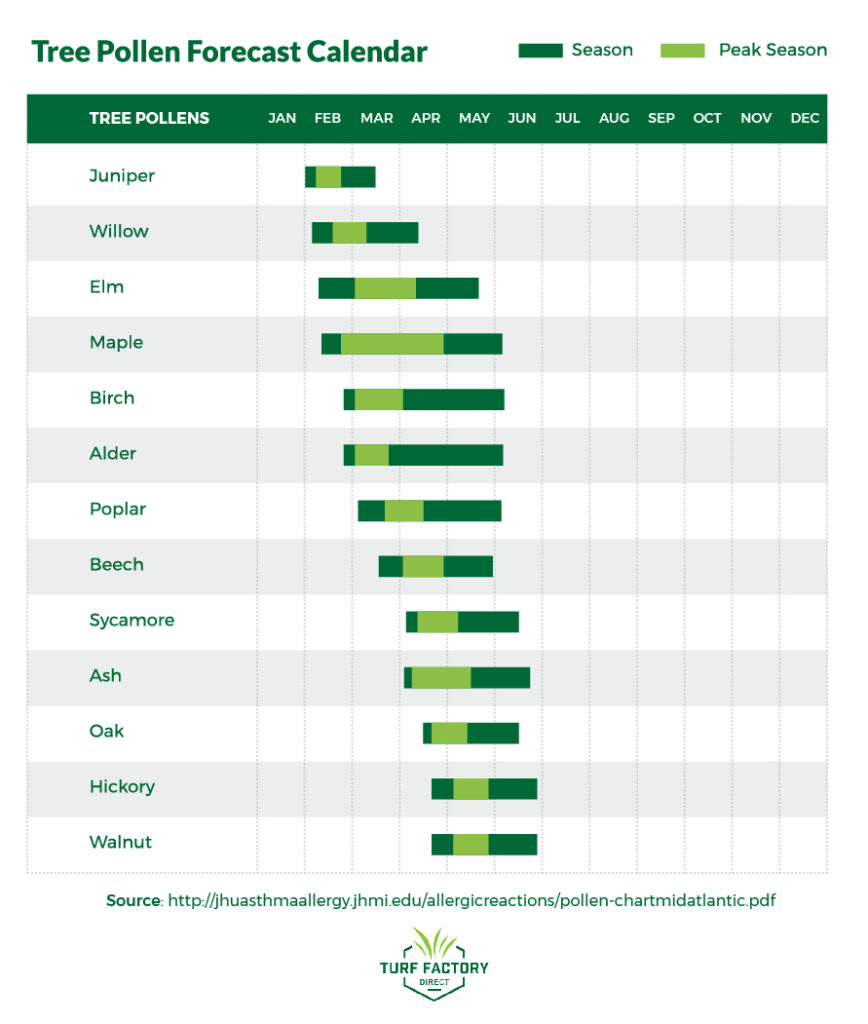
Seasonal allergies are bad enough, and you shouldn’t have to confine yourself indoors just to escape your allergy symptoms and the pollen that causes them. The reality for many allergy sufferers is that the best way to help soothe your allergy symptoms is by reducing the amount of pollen in your environment by selecting trees and greenery that don’t produce much of it.
Some of the most common pollen that causes seasonal allergy symptoms come from flowers, grasses, and trees. The worst allergen producer of all is grass. Fortunately, Turf Factory Direct makes it easy for allergy sufferers to reclaim their lawn.
One of the many benefits of artificial grass is that it doesn’t produce any pollen, which means there is less pollen in the air to trigger your allergies. Since grass pollen is the most common cause of allergy symptoms, it makes sense to replace your lawn with artificial grass to reduce allergens in the air. In addition to getting an artificial turf lawn to relieve allergy symptoms, another great way to reduce allergy symptoms is to reduce allergen-producing trees in your immediate area. We’ll take you through some of the trees that are less likely to cause allergy symptoms.

What are tree pollen allergies?
Most pollen that causes allergic reactions can trace their origins to trees, weeds, and grasses. Seasonal allergies are caused by pollen. Pollen is tiny grains that plants produce to fertilize other plants of the same species that are released into the air during spring, summer, and fall. Pollen can trigger a reaction in people and animals known as seasonal allergic rhinitis, also called hay fever and cedar fever.
Worst Trees for Allergies
The presence of pollen in a tree is a matter of the tree’s pollination method. Most trees are wind-pollinated, which means they produce a light, dusty, pollen that is easily windborne. Wind-pollinated trees are the likely cause of allergy symptoms, rather than those that are primarily pollinated by bees and other insects, because the wind blankets large areas with pollen to ensure pollination.
Most of the common conifers – including pines, spruces, and firs – rely on wind pollination, and so do many broadleaved trees, including aspens, cottonwoods, oaks, ashes, elms, birches, and walnuts.
Since only the male trees produce pollen, and the female trees do not, avoiding planting male trees can be one effective way to reduce allergy symptoms in your immediate area.
You should also avoid planting monoecious trees because they have both female and male parts so they produce pollen. Examples of monoecious trees include fir, birch, hickory, pecan, chestnut, cedar, hazel, beech, walnut, sweetgum, white cedar and hemlock.
Here are a list of the trees that are more likely to cause allergy symptoms:
- Alder
- Ash (male)
- Aspen (male)
- Beech
- Birch
- Box elder (male)
- Cedar (male)
- Chestnut
- Cottonwood (male)
- Elm
- Fir (male)
- Hemlock
- Hickory
- Red and silver maples (male)
- Mulberry (male)
- Oak
- Olive
- Palm (male)
- Pecan
- Pine
- Poplar (male)
- Sweetgum
- Sycamore
- Walnut
- Willow (male)
Best Trees for Allergies
When it comes to finding trees that are allergy-free, dioecious trees are a good option for your yard because dioecious trees are either all male or all female. When choosing dioecious trees, make sure you select a female tree (not a male) to help reduce your pollen exposure. Note that female dioecious trees are seed and fruit bearers, so additional yard maintenance and cleanup may be needed.
Here are some examples of female trees to help reduce allergy symptoms:
- Ash
- Aspen
- Cedar
- Fir
- Ginkgo
- Holly
- Juniper
- Mulberry
- Poplar
- Red maple
- Silver maple
- Willow
- Yew
Additionally, trees that rely on pollination by insects, birds, and bats, often produce less pollen because their pollination process is direct and efficient. The animal-transported pollen also tends to be sticky, heavy, and coarse, so it’s less likely to become windborne and trigger allergy symptoms.
Examples of insect-pollinated trees include:
- Apples
- Basswood
- Black locust
- Cherries
- Catalpa
- Horse chestnut
- Plums
- Tulip tree
These trees have the added bonus of delicious fruits in addition to reduced allergies symptoms!
Turf Factory Direct has the Best Pollen-Free Grass
Long story short — reduce the pollen, reduce the allergies. Plant female dioecious trees instead of male dioecious trees. Plant animal-pollinated trees and avoid monoecious trees. Since grass is often the most common cause of hay fever symptoms, you can dramatically reduce the overall pollen in your home by installing an artificial grass lawn.
In addition to being hypoallergenic, turf is durable, versatile, and attractive, so much so that it can increase property value and help you sell a home fast. Artificial grass isn’t just lawns and sports turf either, turf is great for kids’ playgrounds, pets, and creative landscaping projects. Turf can even go on roofs, decks, concrete, or soil. At Turf Factory Direct, we provide turf to fit any and every need. Get in touch with us to learn more.







